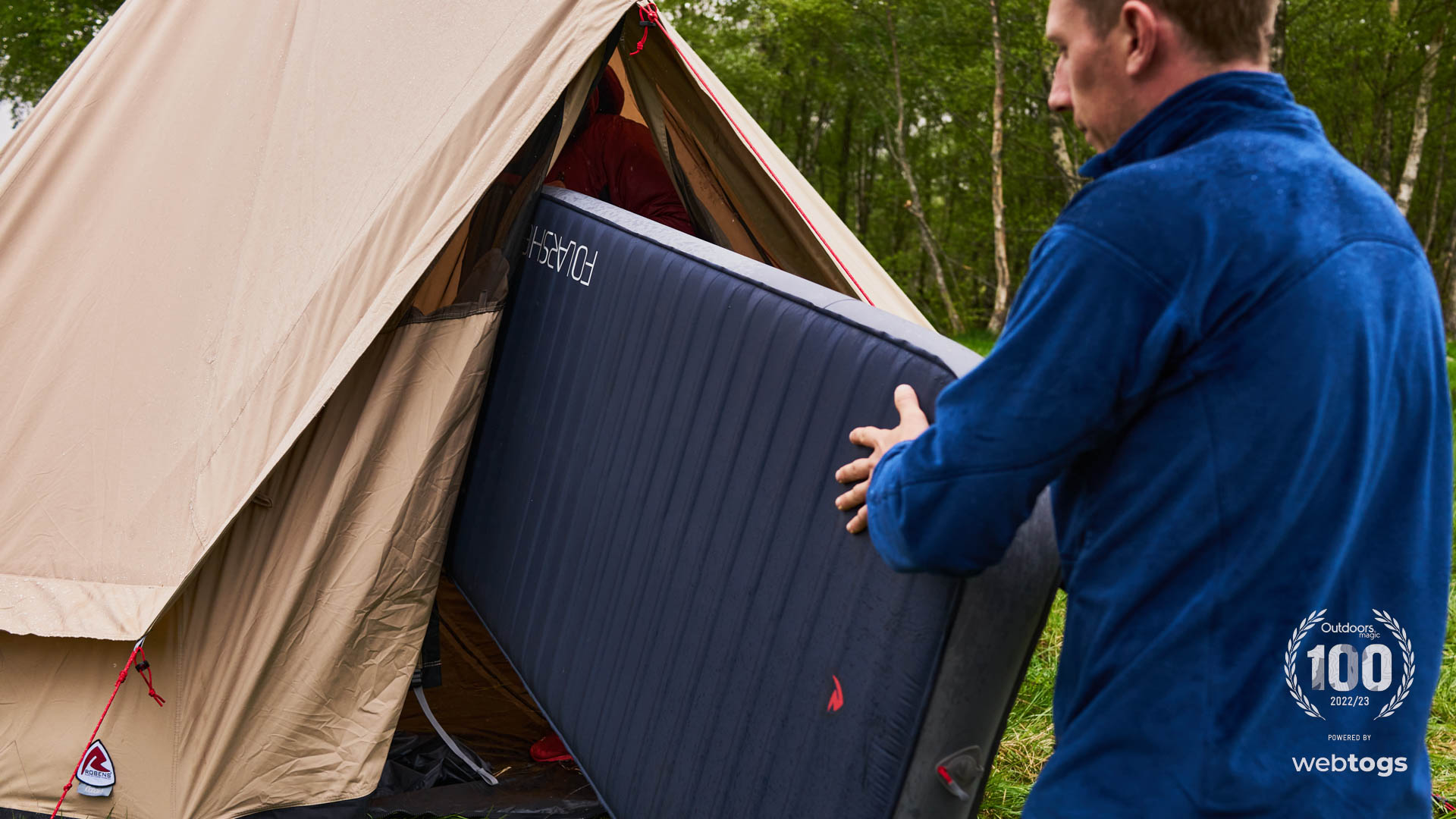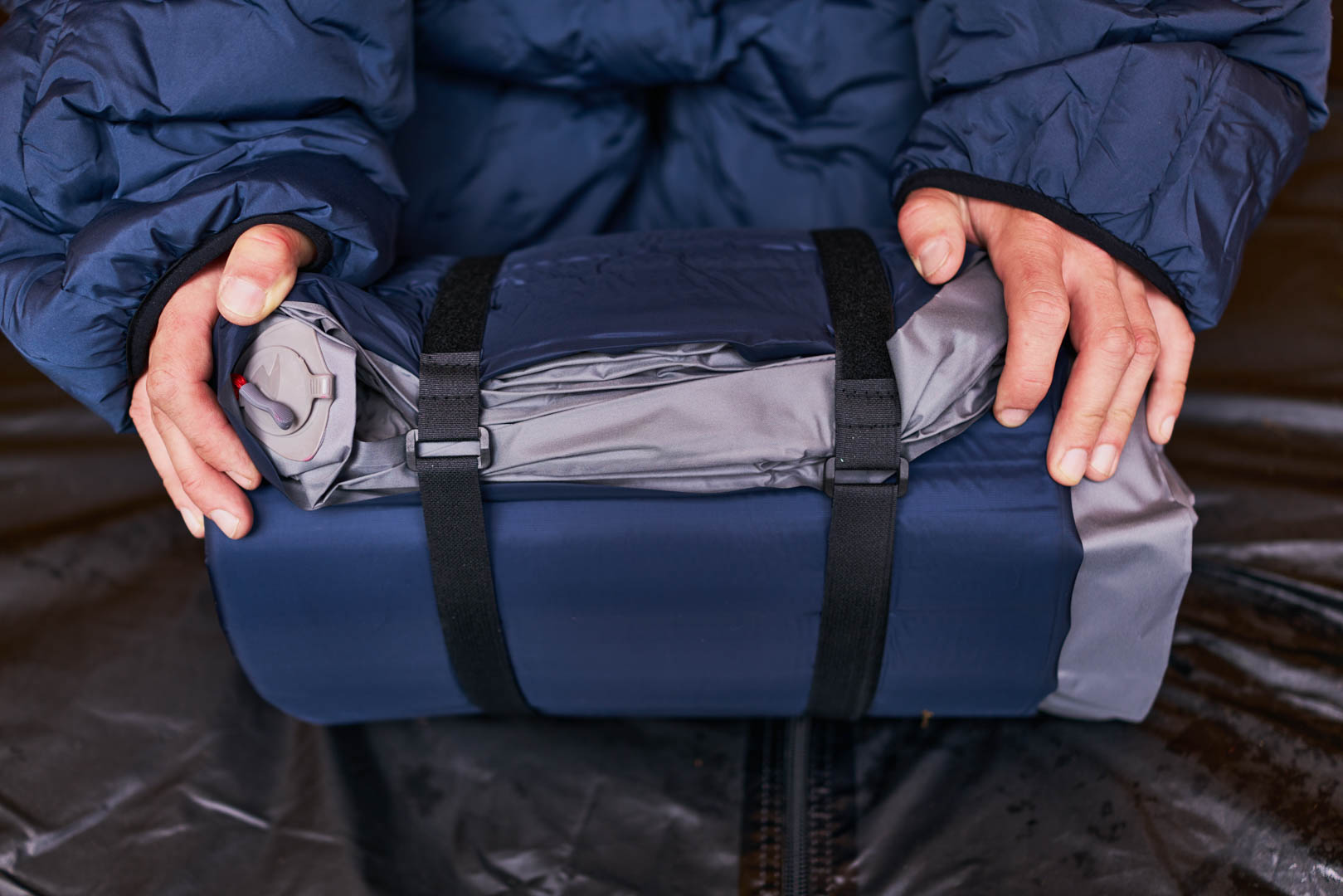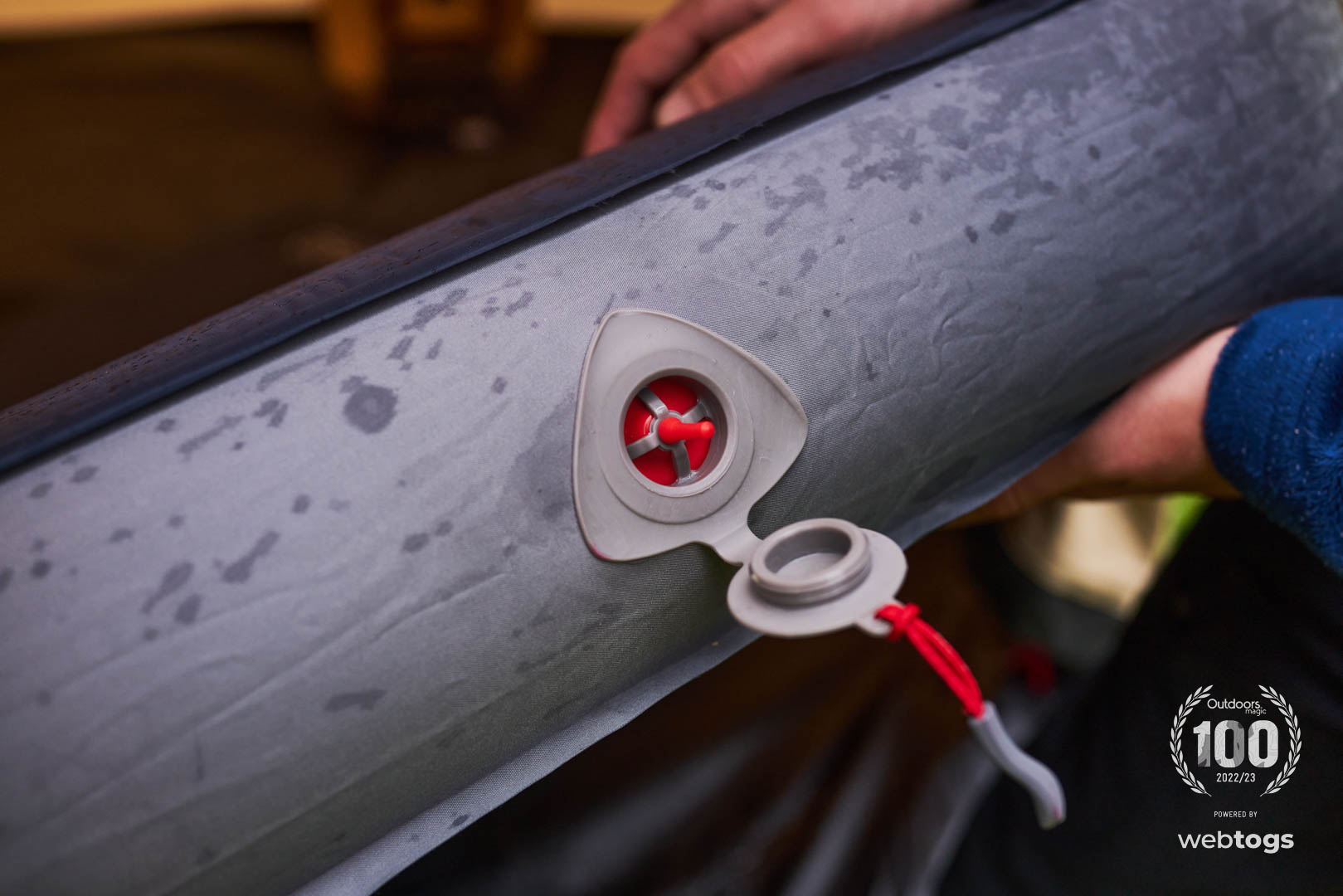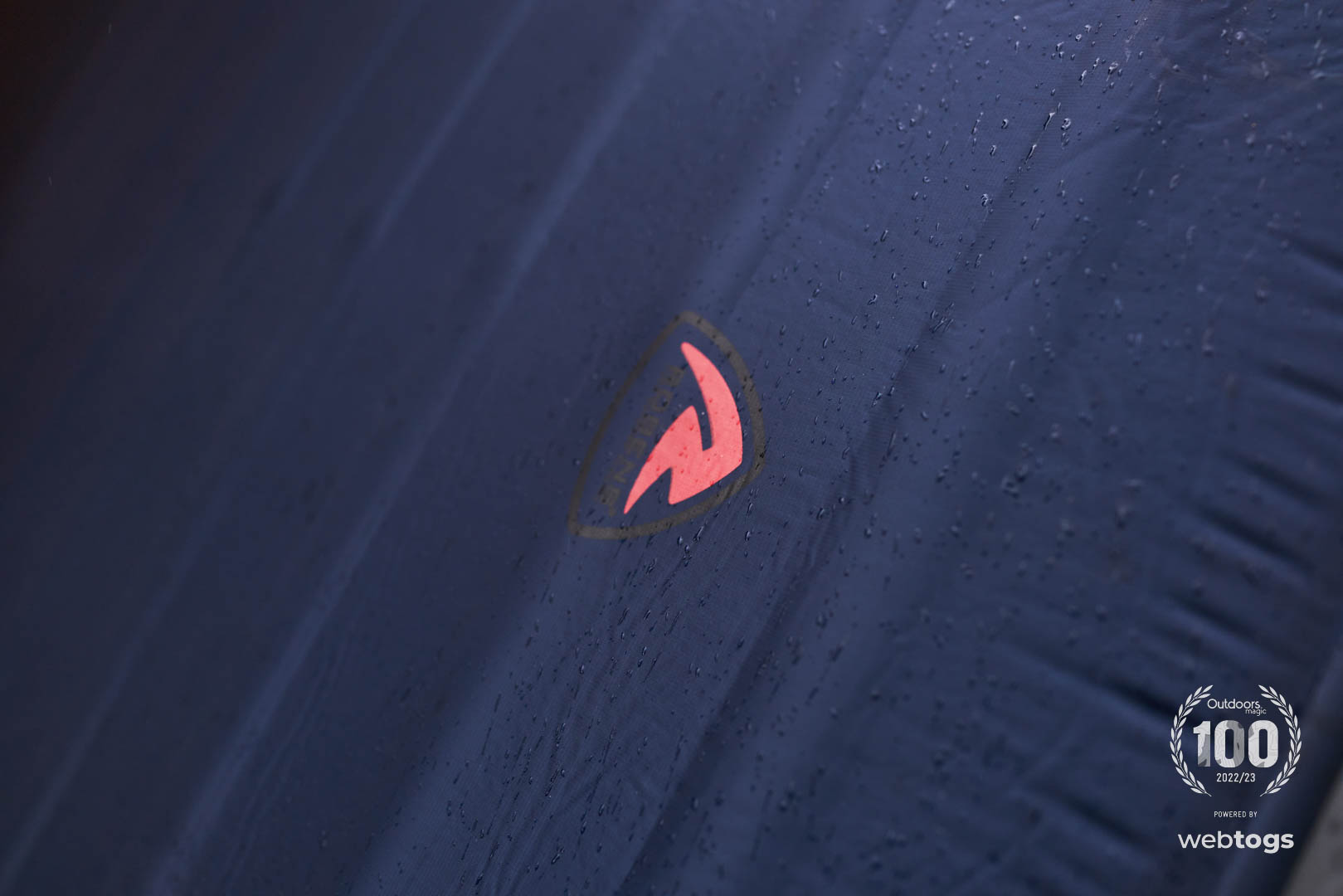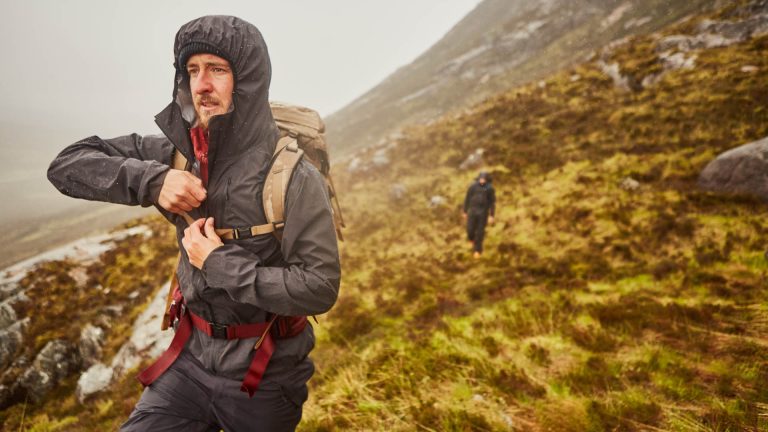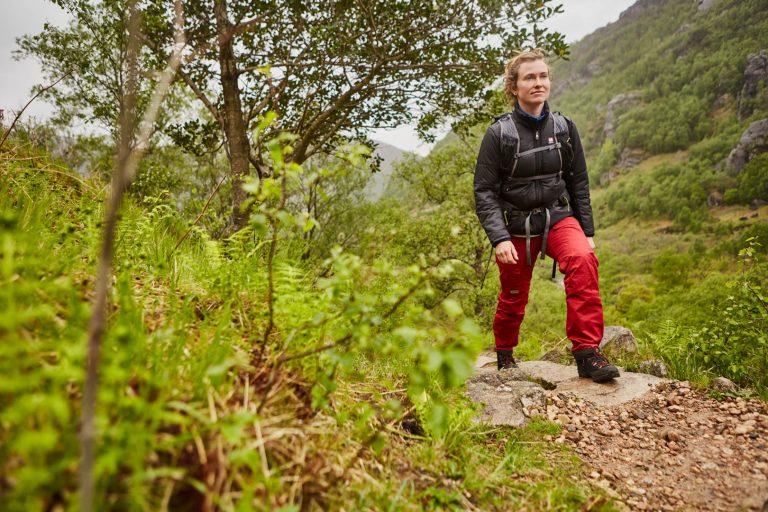Why We Chose The Robens Polarshield 120 Sleeping Mat: PFC-free, high R-value, no-waste production, thick design
As its name suggests, the Polarshield is built to withstand the cold. And with an R-value of 5.0 – that’s up to -19°C – Robens weren’t playing around.
At 12cm in height, it’s actually probably one of the thickest sleeping mats we’ve ever tested. As you can imagine then, it feels very luxurious when compared to most self-inflating mats. It’s got a bit of a blow-up-mattress vibe in this sense, but without the excessive bulk.
Related: Best Sleeping Mats
Here’s how the Polarshield 120 got on in the wilds of the Scottish Highlands on our Outdoor 100 product testing trip.
Who Is The Robens Polarshield For?
This is a mat that’s absolutely ideal for car campers and vanlifers, bringing a surprisingly plush amount of cushioning given its packed size and weight. About the size of a waste paper bin and with a weight of 2.4kg, it’s not really something you’d want to carry on a backpacking trip but short hikes to a basecamp will certainly be realistic with it and it won’t take up too much room in your car boot or in the storage cupboard in your van.
Considering the average UK winter consists of temperatures from just below 0°C up to 7°C, this sleeping mat should work well all year-round. Perfect for those winter van trips then.
Materials and Construction
The Polarshield 120 is built from a sturdy 20D 390T nylon with a double square ripstop weave. This essentially means it’s got a solid amount of weather-resistance and abrasion-resistance for whatever you – and the elements – throw at it.
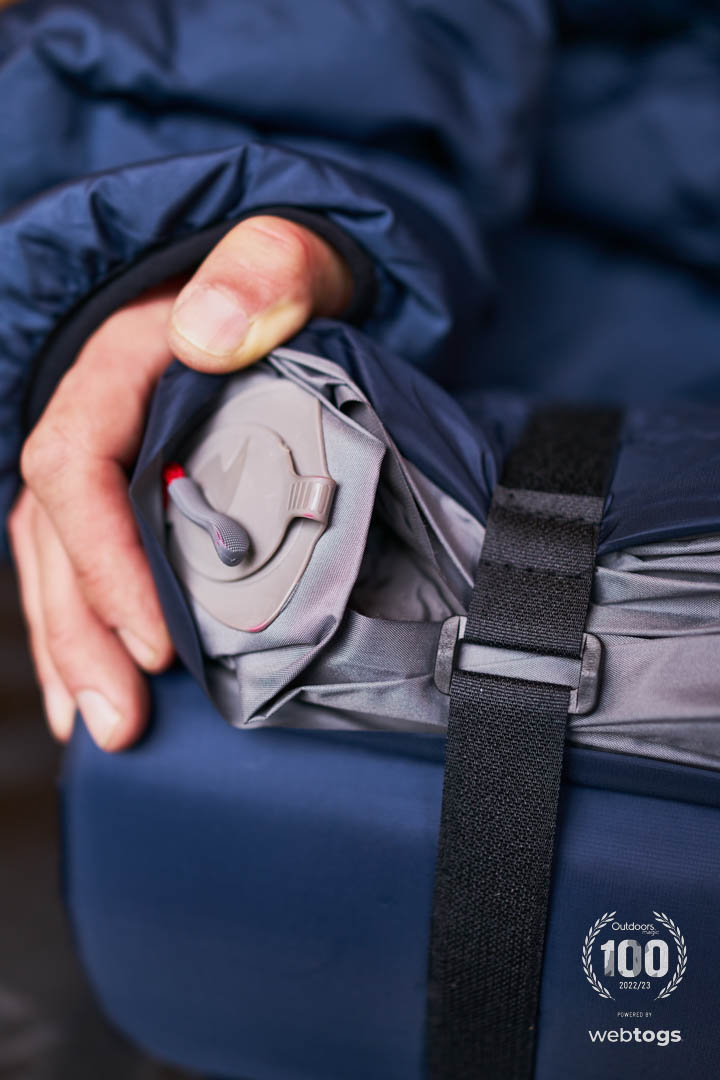
The TPU coating reinforces this toughness, and is claimed to be delamination-proof, meaning it shouldn’t degrade or break apart over time.
The mat is also PFC-free, which is always a plus, and no foam was wasted during the construction of the cut-outs (see below).
Features
The Polarshield has dimensions of 200 x 77 x 12cm (LxWxH) and has a 3-D, self-inflating design. This 3-D shape gives it vertical sides for full use of the mat’s surface, as well as more distance between you and the floor.
It’s also designed with internal offset cutouts on both sides for high and even isolation from the ground, as well as the elimination of cold spots throughout the mat. The cutouts also create rounded air pockets on each side, adding an extra 2cm of thickness and insulation.
The Robens Peak Valve, on the other hand, uses a one-way technology to prevent leaks and is designed with high airflow properties for quick-and-easy inflation. To use it, you open the cover and push the diaphragm in to start the inflation. Once inflated, you pull the valve forward to seal it.
To deflate it, you simply push the valve open and squeeze air out as you roll up the mat. It’s worth noting that, thanks to Robens’ one-way technology, you can blow air into the mat when it’s constructed without letting any of the existing air out.

